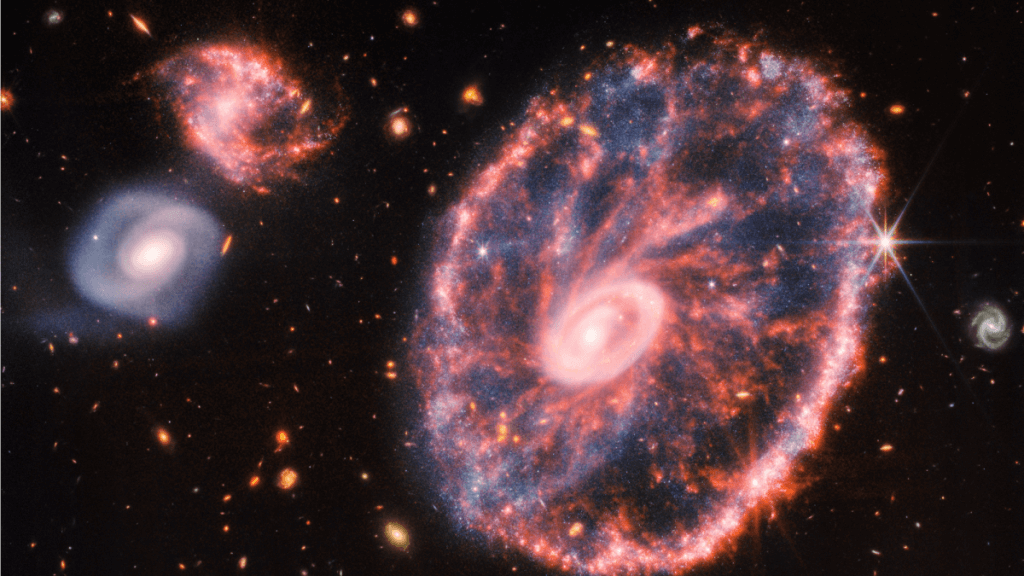
Webb telescope captures vivid galaxy collision in new photo (Image Credit: Mashable)
Despite vast amounts of space in space, cosmic stuff still bumps, smashes, and sideswipes other celestial objects, with no traffic cops in the sky to tame reckless drivers.
The James Webb Space Telescope, the powerful observatory orbiting the sun about 1 million miles from Earth, has made rubbernecking space impacts that much easier. It recently caught the aftermath of a catastrophic collision on camera. The subject, known as the Cartwheel Galaxy, shows what happened after a smaller galaxy impaled a large spiral galaxy similar in shape to the Milky Way. The shockwaves from the crash kicked up gas and dust and ignited new star-forming hotbeds.
Other telescopes such as Hubble have previously studied the Cartwheel, about 500 million light-years away in the Sculptor constellation, to learn about the collision that reshaped it over billions of years. But much of the galaxy’s structure has eluded astronomers because of how much has remained hidden from sight. NASA, the European Space Agency, and the Canadian Space Agency are using the new photo released on Tuesday to demonstrate, yet again, the power of their new telescope.

Webb
August 2022
Credit: NASA / ESA / CSA / STScI / Webb ERO Production Team
Hubble
January 2018
Credit: ESA / Hubble / NASA
Webb, which can see through previously impenetrable space mirk, has upped the ante in the forensic analysis of the Cartwheel Galaxy. Astronomers say they can now see baby stars on its outer edges, new details of the supermassive black hole at its center, and two smaller companion galaxies, along with a deep canvas of distant galaxies upon galaxies upon galaxies.
The Cartwheel has two concentric rings — an uncommon galactic shape found in the universe. The galaxy’s bright center features a black hole surrounded by dense gas and hot dust. The most torrid areas host older stars, while the outer rim, expanding over 440 million years, is teeming with young stars and explosive supernovas.
“As this [outer] ring expands, it plows into surrounding gas and triggers star formation.”
“As this [outer] ring expands,” according to the Space Telescope Science Institute in Baltimore, “it plows into surrounding gas and triggers star formation.”

Credit: NASA / ESA / CSA / STScI / Webb ERO Production Team
The telescope’s near-infrared camera data are shown in blue, orange, and yellow. The blue dots are individual stars or pockets of star nurseries. This camera also displays the contrasting smooth old star regions and clumpy new star areas.
Astronomers are also learning more about what makes up the dust in the galaxy with images from Webb’s mid-infrared instrument. The data, colored red, shows regions chock full of hydrocarbons, silica similar to that found on Earth, and other compounds. These chemicals form a framework of spiraling wheel spokes.
Scientists say though the Hubble photo taken four years ago captured the “spokes,” too, Webb’s picture brings out significantly more detail in them.





